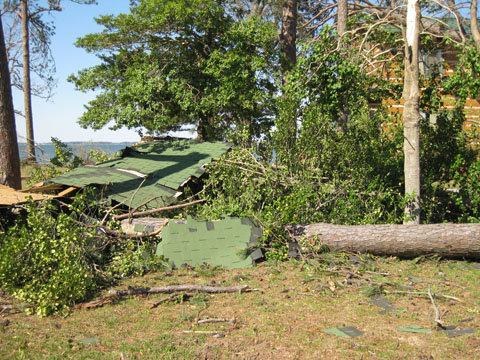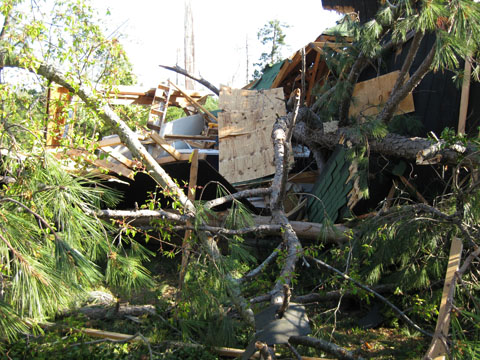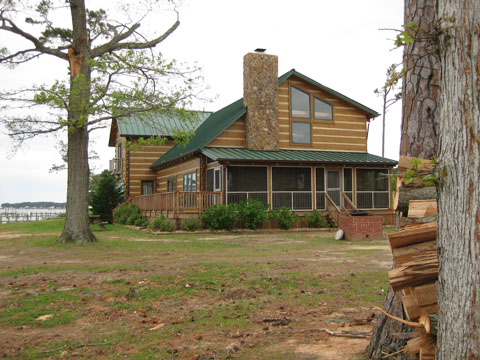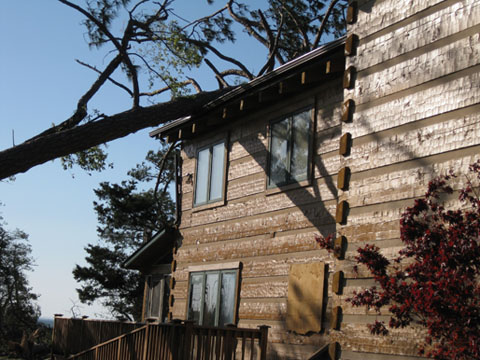Kimball I. Maull feared the worst when he learned Deltaville, VA, was struck by a tornado on April 16, 2011. Maull owns a vacation home there, right along the Chesapeake Bay. As he rushed to the typically quiet coastal community the next day, news reports revealed the tornado’s path traveled from Fishing Bay to the Rappahannock River—and directly over his 10-acre estate.
 “The tornado destroyed three homes directly across the creek from my property, as well as a nearby church,” says Maull, a trauma surgeon and adjunct professor at the University of Pittsburgh. But Maull was thrilled to find his log home standing tall, withstanding a tornado later classified as EF-1 by the National Weather Service–a low rating on the Fujita scale (which evaluates a tornado’s force on a scale ranging from 0 to 5), but strong enough to achieve sustained wind speeds up to 110 mph.
“The tornado destroyed three homes directly across the creek from my property, as well as a nearby church,” says Maull, a trauma surgeon and adjunct professor at the University of Pittsburgh. But Maull was thrilled to find his log home standing tall, withstanding a tornado later classified as EF-1 by the National Weather Service–a low rating on the Fujita scale (which evaluates a tornado’s force on a scale ranging from 0 to 5), but strong enough to achieve sustained wind speeds up to 110 mph.
Maul’s bucolic property is bordered on all three sides by water. In addition to the 3,452-square-foot log home, the property features an eight-acre pine forest, several out buildings and a dock. Most of that is gone now, testament to the tornado’s destructive power.
“The forest was all mature trees, pine and hardwoods. The tornado snapped them like toothpicks or uprooted them completely,” Maull says. “The outbuildings were a total loss. Everything above the water line on the dock was destroyed. An outdoor gas grill located on the rear deck of my home was found 500 yards away, near the river’s edge.”

Maull’s log home — built in 2001 by NAHB Log Homes Council member StoneMill Log & Timber Homes in Knoxville, TN — lost a few gutters and three windows were broken. The tornado toppled a large pine tree, 27-inches in diameter, onto the roof.
“Despite the absolute destruction on all sides, my home remained intact,” says Maull. “When I got there on Sunday I was so impressed with the quality of workmanship and sound design. This is confirmation in my mind of the solid construction of a log home.”


